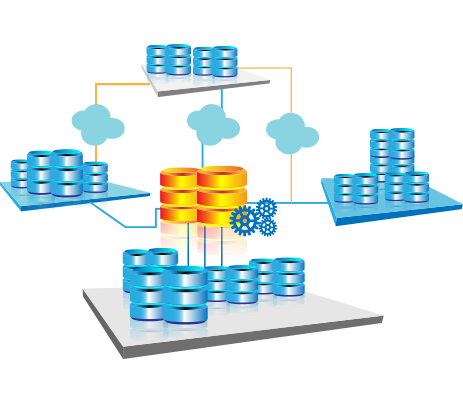Too much load on a single server can compromise its performance and may even cause it to crash. Load balancing distributes the amount of processing work that a server has to do evenly across a network of two or more servers so that no single device is overwhelmed. This allows more work to be done in the same amount of time and, in general, all users get served faster
- info@m9systems.com
- 949-756-8555
Load Balancing
Load balancing is especially important for networks where it's difficult to predict the number of requests that will be issued to a server . Load balancing allows servers to be added on the fly to accommodate traffic surges for maximum performance or to be removed from the cluster without any downtime.
By allowing multiple small servers to be used in place of one large server, load balancing ensures high performance and throughput as well as redundancy. The architecture of a server cluster has redundancy built in, making recovery from the loss of an individual server fast and easy with virtually no loss in information and no downtime for users. So, not only do you achieve effective distribution of traffic for optimal user performance, but also gain the first elements of a full disaster recovery strategy.
Un-weighted Round-Robin
Traffic is evenly distributed among all servers in the cluster in a circular fashion.
Weighted Round-Robin
Traffic is distributed among all servers in a circular fashion; however, each server is assigned a weight that represents its capacity to handle connections, as compared to the other servers in the cluster. New connections are assigned to a given server “x” times before the next server in the cluster is chosen.
The weighted least connections algorithm specifies that the next server chosen from the cluster for a new connection is the server with the fewest (least) active connections. Each real server is assigned a weight for this algorithm. When weights are assigned, the decision of which server have the fewest connections is based on the number of active connections on each server, and on the relative capacity of each server.












